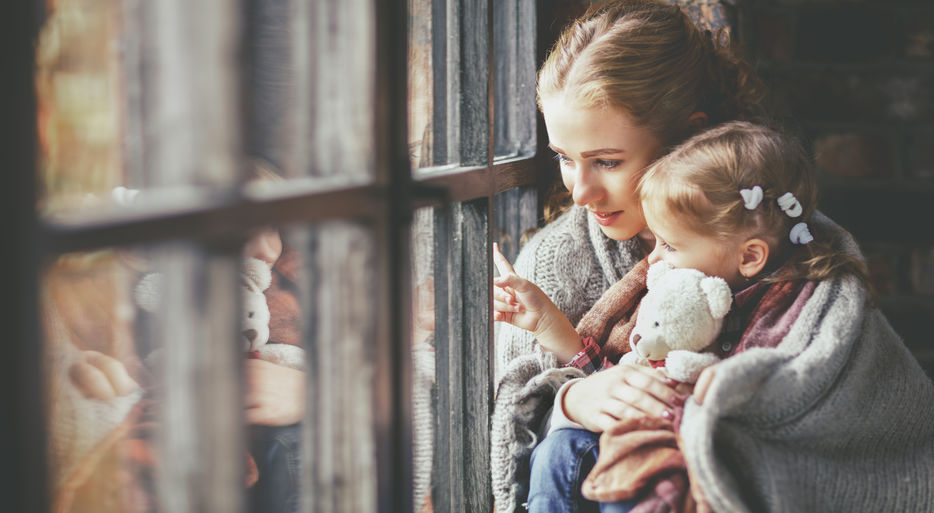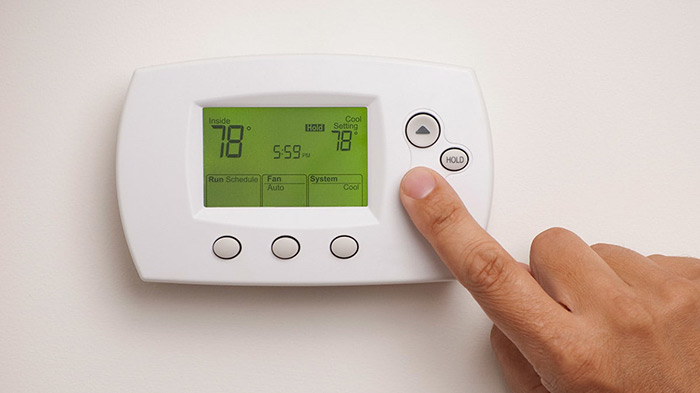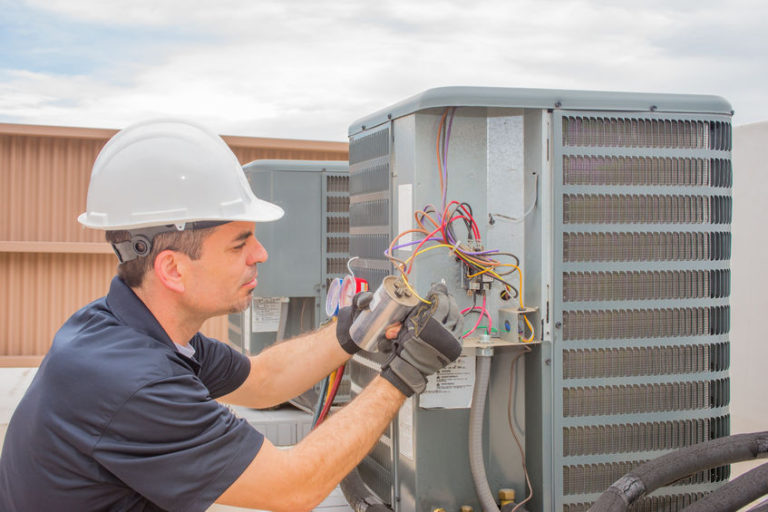How do you feel about the fall season? Some say it’s their favorite time of year – sports on TV, cool enough to work outside in the yard and who doesn’t love sweater weather?
View Our HVAC Services | Learn About All Air Systems
This could be a reason to be upset as temperatures start to dance back and forth between summer heat and winter chill. In fact, for those of us who thrive in summer, it may seem like every time the temps drop below 50 degrees outside we immediately declare “It’s time to crank up the heat!”

As fall approaches, it’s a good time to start thinking about your heating needs and how you’ll keep your home comfortable.
Others take the position where if it dips into the low 40’s or flirts with below freezing outside, then it’s acceptable to finally turn the furnace on. If you’re that cold, you can always put on another layer or two and hide under a blanket.
In this blog post, we’ll provide practical advice on when to turn on the heat and how to make the best thermostat decisions for your home.
The question inevitably shifts to how warm do we set the thermostat once we finally allow it to be turned on?
Call 732-888-0952 or Contact Us for a Free Heating and Cooling Quote in
Monmouth and Ocean County, New Jersey!
So how cold does it have to get outside before you finally submit to mother nature and turn on the furnace for the first time?
The answer is not the same for everyone, even if you live in a similar climate or elevation, because it largely depends on the insulation and or thermal mass you have around your structure, the age and layout of your house, its location, the humidity and if the sun is out or behind the clouds.
The weather in the Fall can be tricky. The are typically cold and there may even be some signs of frost. However, by lunch time temperatures in the Northeast region can climb with the help of the warmth of the sun. Therefore, many families have a hard time deciding when to turn on the heat for the season.
Consider these things when deciding to turn on your furnace
Indoor Temperatures
The World Health Organization (WHO) has defined standards for healthy indoor temperatures. WHO recommends a minimum indoor temperature of 64.4 degrees Fahrenheit, but if you have children or are a senior 69.8 degrees would be ideal. The average temperatures where home owners decide to turn on the heat in NJ range from the low 40s to the high 60s, so this is when NJ households turn on the furnace for the first time in fall/winter.
Personal Preference
If you don’t mind the cold, you may be able to easily let temperatures in your home fall below the advice of WHO. It should be obvious that if you find yourself uncomfortably cold even with extra layers on, you should consider turning on your furnace. You shouldn’t have to be shivering in your own home. Closing off unused rooms can also help improve heating efficiency and keep the areas you use most at a comfortable temperature.
Sleeping Temperatures
Many homeowners will adjust the heat so that their home is comfortable at night. Having warmer bedding may be a way to save on energy costs but if you still find yourself cold or have young children set the thermostat higher at night and then turn it back down during the day.
When you are ready to start using your furnace regularly, contact an HVAC professional in your area for a pre-season inspection and tune-up. The contractor will make sure your furnace and HVAC system are ready for the season so that you can start using it whenever the temperatures seem to be cold enough for you. You can also review some important DIY furnace mistakes to avoid before attempting any maintenance yourself.
If you wait too long to turn on the heat, some materials in your home will start to absorb moisture, for example: wood, sheetrock, some kinds of insulation, some stone and brick inside homes and upholstery. Heat evaporates moisture. Try to keep temperature above 64 degrees to keep humidity problems to a minimum. Condensation increases the time to bring the temperature to a comfortable level. Sealing drafts and using caulking or weatherstripping to prevent cold air from entering, especially in older homes, can help reduce heat loss and lower furnace energy consumption.
Many homeowners design their home and lifestyle for comfort. They turn on the heat whenever they feel cold, which may be a relatively warm. The amount of heating needed at these times is trivial, and the heat transfer is slow. In most cases though, the average person living in the northeast will usually switch the wall mounted thermostat from air condition mode to heat only mode in late October. If it’s really cold outside you may end up cranking it up a few degrees. This will be true for people who enjoy their home pleasantly comfortable. Not too hot, not too cool. Managing the temperature and humidity in your space can help you stay comfortable and maintain energy efficiency.
What’s the Best Temperature to Set the Thermostat in Winter?
Trane unequivocally says to set your thermostat to 68 degrees Fahrenheit in the winter, which is considered the ideal temperature for comfort and efficiency. They cite Energy Star’s assertion that it’s at that temperature where your home is the ideal balance of comfort and energy efficiency. Most people find this range comfortable, but individual preferences may vary.
Save even more by lowering the temperature (about 10-12 degrees Fahrenheit or 6-8 degrees Celsius) at night or when you’re away. These adjustments can lower your energy bill and overall heating cost. Even small changes to your thermostat can have a big impact on your utility bills. Raising or lowering the temperature during the day or forgetting to adjust to the proper temperature can increase your costs over time. Additionally, if your system is not maintained, it can run inefficiently, leading to higher costs. Heating and cooling costs can be decreased by as much as 10% by turning back thermostats 7 – 10 degrees Fahrenheit for eight hours a day.
The Importance of Indoor Humidity
When it comes to keeping your home comfortable and energy efficient during the heating season, indoor humidity is just as important as the temperature you set on your thermostat. According to the World Health Organization, the ideal indoor humidity level should be between 30% and 60%. Staying within this range not only helps maintain a comfortable temperature, but also reduces heat loss and keeps your heating bills in check.
If indoor humidity drops too low—something that often happens when outdoor temperatures fall and the air gets drier—your home can feel colder than it actually is. This can tempt you to turn up the heat, which leads to higher energy bills. On the other hand, if humidity is too high, your home may feel warmer, but you could end up with moisture problems and increased cooling costs when the weather turns hot.
Your heating system and thermostat settings play a big role in managing indoor humidity. For example, a well insulated home with energy efficient windows can help you maintain a comfortable temperature at a lower thermostat setting, saving you money on your heating bill. But if your home isn’t as well insulated, you might need to set your thermostat a few degrees higher to stay warm, which can increase your energy bills.
To keep indoor humidity at the right level, consider using a humidifier during the winter months. Adding moisture to the air can make your home feel warmer, allowing you to set your thermostat to a lower temperature without sacrificing comfort. In the summer, a dehumidifier can help remove excess moisture, making your air conditioners work more efficiently and reducing cooling costs.
It’s also important to pay attention to how outdoor temperature and weather affect your indoor air. When temps drop outside, the air inside your home can become very dry, so using a humidifier can help you stay comfortable and avoid cranking up the heat. When it’s hot and humid outside, a dehumidifier or adjusting your thermostat settings can help keep your home comfortable and energy efficient.
Ultimately, managing indoor humidity is about finding the sweet spot for comfort and energy efficiency. By keeping an eye on your heating system, thermostat settings, and using humidifiers or dehumidifiers as needed, you can save money on your energy bills and keep your home comfortable all year long. Remember, the right temperature for your home depends on your personal preferences, but maintaining optimal indoor humidity will help you stay warm in the winter and cool in the summer—without breaking the bank.
Lower Temperature Settings = More Savings
It’s tempting to raise the heat to keep the entire home toasty warm during the winter, but those high settings come with a high price tag. As a matter of fact, high thermostat settings may not be helpful when heating the home.
As general guidelines, the experts at the Department of Energy recommend setting the thermostat at around 68°F or lower each day when the home is empty, or at night when your family is sleeping. Raise it a bit when you come home. You might think that when the temperature is set to a lower setting, it overworks the furnace to raise the whole home’s temperature when you jack up the heat coming home after work, but DOE says this isn’t true. They agree that turning your thermostat back by 7°F to 10°F for 8 hours a day from its normal setting will save you up to 10% a year on heating costs and keeping the home at a lower interior temperature actually slows down heat loss.



